How to Clean a Cooktop Stove and Avoid Scratches on It
More and more people are choosing electric and induction cooktops: they look modern, do their job well, save energy, and can also be used as an additional work surface in a small kitchen. Unfortunately, these cooktops can get dirty pretty quickly. Fingerprints and stains easily appear on them, and small scratches are especially irritating. And while most stains can be easily removed, there are ways to make even real damage to the cooktop less noticeable.
5-Minute Crafts would like to tell you how to clean a ceramic-glass cooktop correctly in order to remove stains, dirt, and abrasions.
Method 1: Light stains and regular care
The following instructions will help you take care of your cooktop on a regular basis:
- Wait for the cooktop to cool, then wipe it with a damp, clean cloth and then dry it with a paper towel.
- Grease stains can be removed by applying a little dishwashing detergent (it’s important that it doesn’t contain micro-particles that can scratch the cooktop), while limescale from water droplets can be removed with a vinegar-based cleaner. Afterward, wipe the surface first with a damp cloth and then dry it with a paper towel.
Important: To protect the stove from scratches, try not to use metal sponges or sponges with an abrasive coating.
Method 2: Tough stains, abrasion, and small scratches
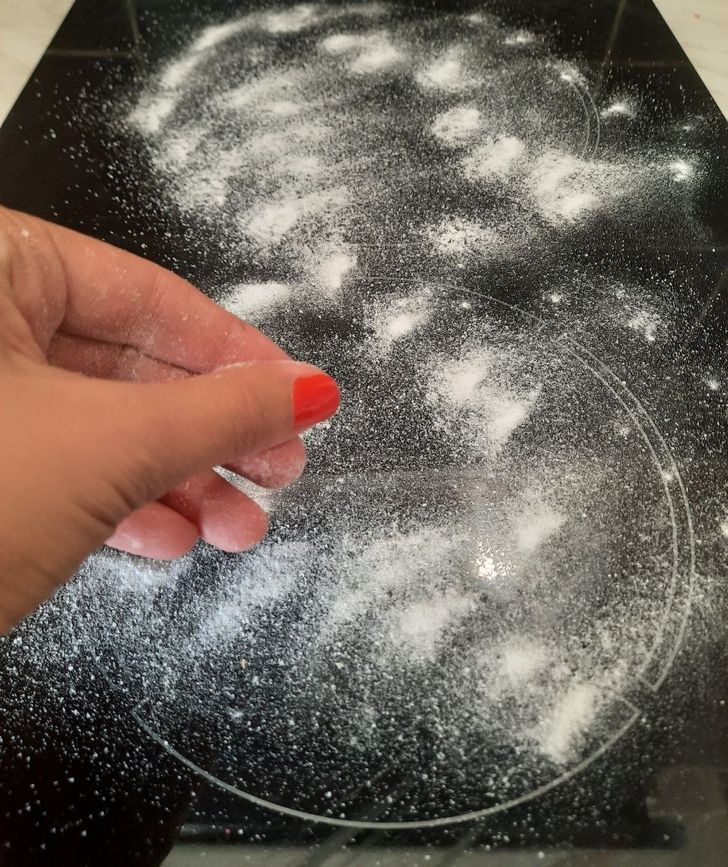
Step 1. Wait for the cooktop to cool down. Sprinkle baking soda on the cooktop, ensuring the entire surface is covered.
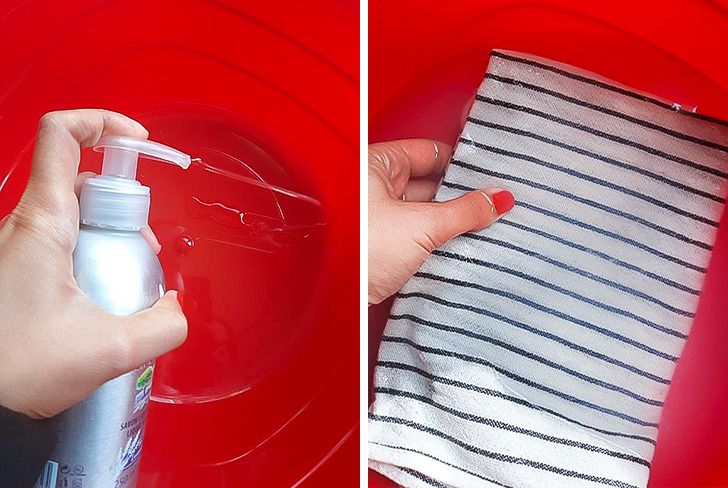
Step 2. Pour warm water into a basin and dissolve a small amount of soap in it to make a soapy solution. Soak a clean cloth in it for a few minutes (its size should be at least as large as the cooktop).
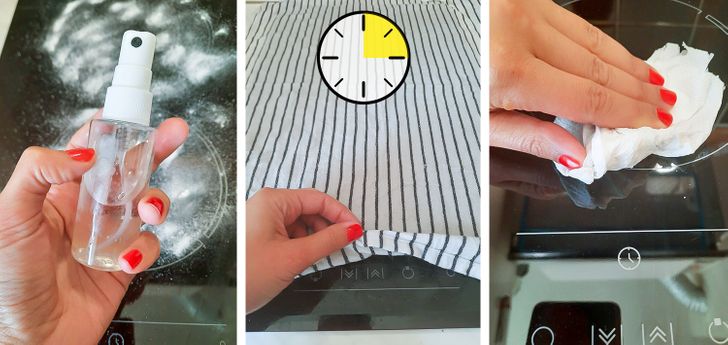
Step 3. Using a spray bottle, lightly sprinkle a small amount of vinegar on the cooktop — the vinegar should be just enough to get the baking soda bubbling. Remove the towel from the soapy solution and wring it out well to keep it damp but not wet. Then cover the cooktop with it. Leave it on for 15 minutes.
Then remove the towel along with the remaining baking soda and vinegar, wipe the surface first with a soft damp cloth, then dry it with a paper towel. As a result, you’ll get rid of stains and minor scratches, getting a clean and shiny surface. If stains, minor scratches, and abrasions remain, proceed to the next method.
Important: To prevent the baking soda from scratching the cooktop, sprinkle it with vinegar, and then remove it with a damp towel as carefully as possible.
Method 3: Tough stains, small scratches, and burn marks
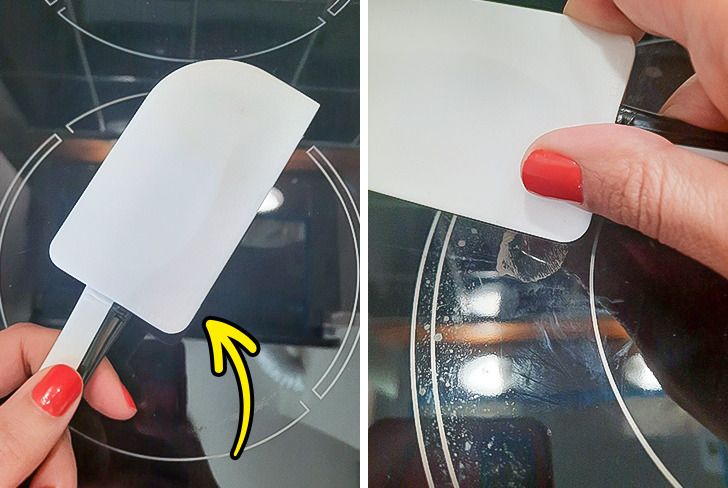
- Some stains can be removed from the cooktop with a silicone spatula. Rub stains with it for a few minutes in circular motions. In some cases, adding a little detergent or water can soften the stain and speed up the process. After that, you can follow all the steps from the second method to fully clean the cooktop.
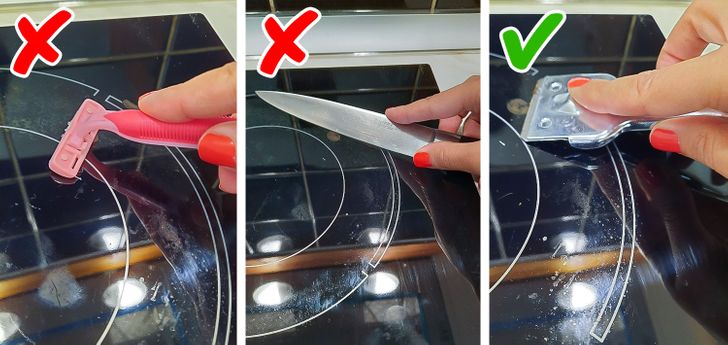
- To remove more stubborn stains like burnt milk, you may need a sharp, straight blade. It’s not recommended to use a knife or a razor for this: the risk is too high that due to uneven pressure or an irregular blade shape, you will damage the surface of the cooktop, leaving scratches on it. It’s best to use a special metal scraper with a sharp, straight blade, which usually comes with the cooktop. Use it to scrape off the stains (if necessary, you can slightly moisten them), and then proceed with the regular cleaning of the cooktop. It’s recommended to keep the scraper at an angle of 30 degrees, relative to the surface of the cooktop. This way, you can remove small gray streaks from contact between the surface of the cooktop and the dishes, as well as carefully mask minor scratches. After that, you can proceed to the cleaning described in the second method, or use special cleaners for ceramic glass from the next paragraph.
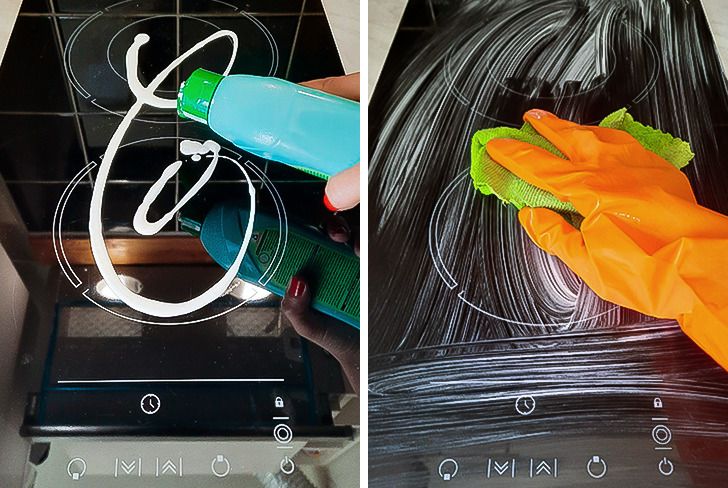
- The special ceramic glass cooktop cleaners easily remove even stubborn stains. In most cases, it’s enough to apply these products to the cooktop (make sure that the surface has cooled down after cooking), spread it evenly with a sponge or napkin, leave it on for a couple of minutes, then wipe dry with a damp cloth or paper towel. There are also professional products that not only clean, but also have a polishing effect, due to which they well mask small scratches on the surface of the cooktop.
A few more useful tips
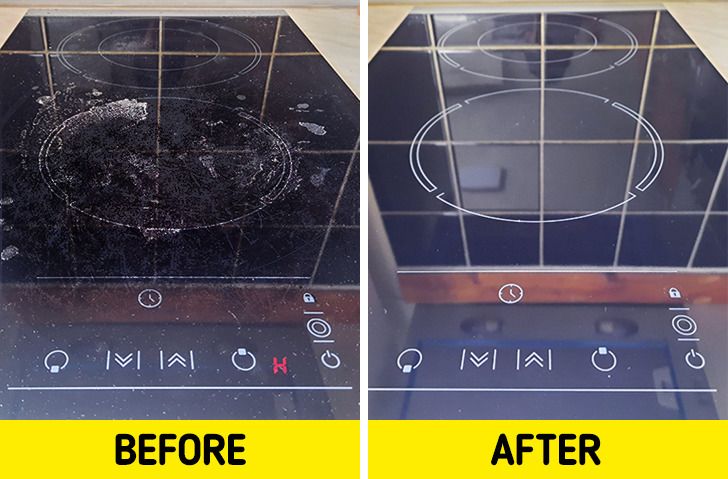
- There is no need to wait until the cooktop is stained. It should be washed regularly after each use.
- Any cleaning agents should only be applied to a cooled surface.
- Don’t use a kitchen surface cleaner for cleaning, as it usually contains soda or other small particles that can scratch the surface of the cooktop.
- You should also be careful with oven cleaning sprays, as their composition may not be suitable for cleaning the cooktop.
- If sugar or any other product containing sugar gets on the hot cooktop, you must immediately remove it from the surface of the cooktop with a metal scraper, without waiting for it to cool down. The same applies to the moments when any plastic object, like plastic wrap or a bowl, gets on the hot cooktop. At the same time, to protect your hands from possible burns, it’s better to hold the scraper with an oven mitt.
- If you notice that characteristic spots from salty water (salt deposits) have appeared on the cooktop after cooking, first soften them by gently touching them with a damp sponge, and then remove the resulting slush using a metal scraper. Then proceed to the regular cleaning of the cooktop.
- Don’t use glass cleaners, as their composition may be too aggressive for the ceramic glass cooktop surface.
- If scratches appear on the surface of the cooktop, which can’t be removed with any of the methods mentioned above, it’s better to contact a professional technician who will polish the surface with special products or, if this is not enough, they will tell you if you can just replace the top panel without buying a new cooktop.